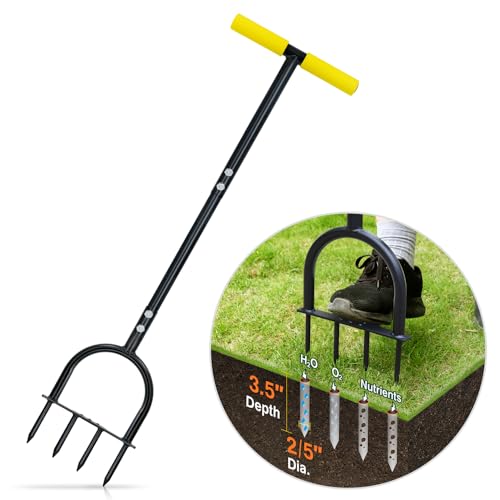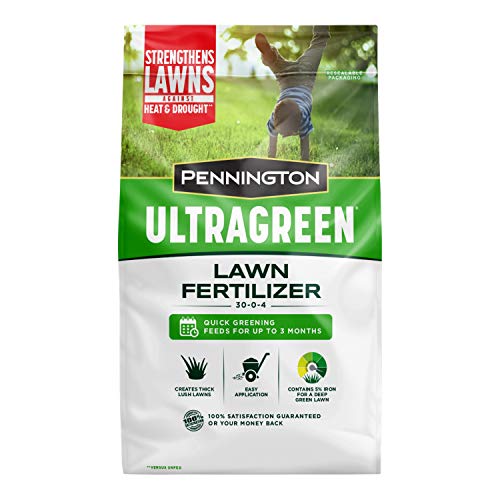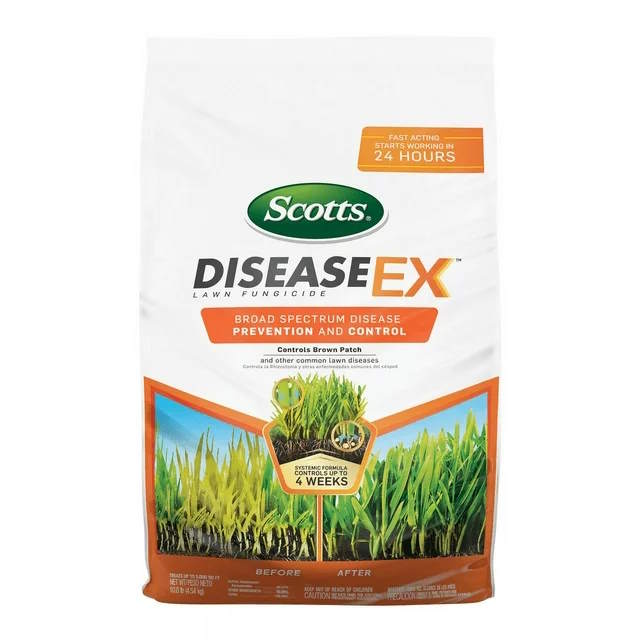This lawn disease can be a major headache for anyone with Kentucky bluegrass – here's how to combat it
Expert advice to prevent necrotic ring spot from wreaking havoc on your lawn


A pristine lawn is the dream for many homeowners and the sight of bare patches of grass will be a real headache. The truth is that several different lawn diseases can result in these unsightly blemishes.
If your lawn is made up of Kentucky bluegrass, then there is a high chance that those bare patches are being caused by necrotic ring spot. It is a perennial fungal disease that appears in fall or spring and is particularly destructive to cool-season grasses.
Maintaining a healthy lawn through good annual lawn care is the best way to avoid necrotic ring spot becoming an issue. It can be a tricky disease to manage if it does appear, but there are preferred ways to combat it and get your lawn looking back to its best.
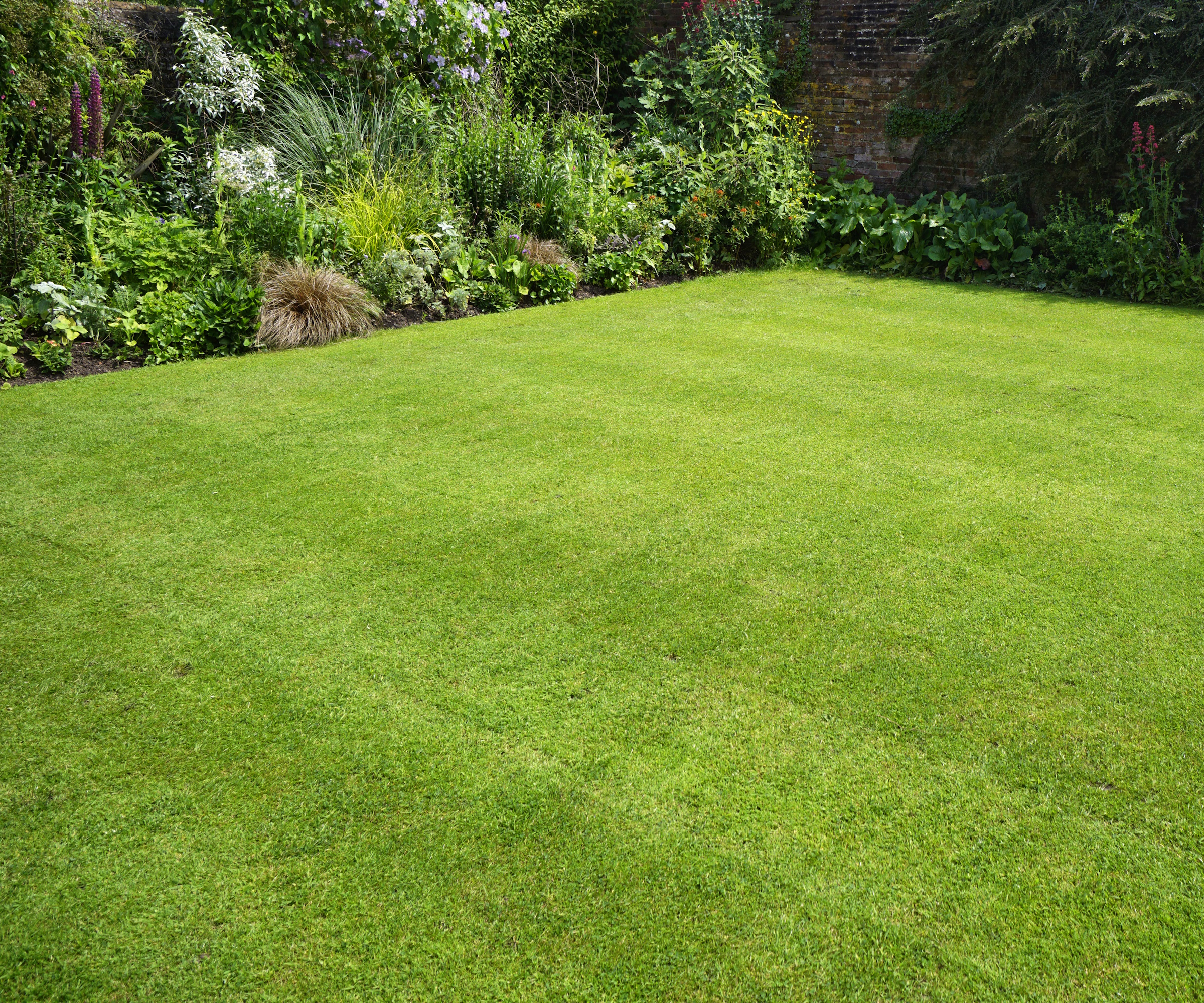
Lawns made up of cool-season grasses are vulnerable to necrotic ring spot
What causes necrotic ring spot
Necrotic ring spot is a common lawn disease caused by a soil-borne fungus called Ophiosphaerella korrae. The fungus affects the root systems of grass and is most commonly seen when the weather is cool and wet. It restricts the grass from taking in water and nutrients and can survive year-to-year in the roots of infected patches on a lawn.
Signs of necrotic ring spot

Bare patches in a lawn are a sign of necrotic ring spot
Necrotic ring spot thrives in cool and moist conditions when the soil temperature is between 65-70˚F.
The first signs of necrotic ring spot will be small circular bare patches of dead grass, which can range from a few inches to several feet in diameter. If left untreated, the patches can continue to grow larger each year.
It is important to look out for signs of abnormalities in your lawn. Scott McLeod, the owner of McLeod Landscaping, advises how the damage can start with a bronze tint and infected patches of grass will develop in color and shape over time.
Design expertise in your inbox – from inspiring decorating ideas and beautiful celebrity homes to practical gardening advice and shopping round-ups.
‘The centers of these patches may sometimes contain healthy grass, giving the appearance of rings,’ adds Scott. ‘Affected grass often has a straw-like texture and the roots may appear black and rotted.’
Necrotic ring spot does primarily affect lawns started from sod. After you lay turf, a necrotic ring spot often appears when the sod has been down for two or three years.

Scott McLeod is the owner of McLeod Landscaping Inc., a leading provider of commercial and residential landscaping services in Tewksbury, MA, and the surrounding areas. With over three decades of experience, Scott has grown McLeod Landscaping into a trusted partner for landscaping design, construction, renovation, enhancement, and maintenance.
How to prevent necrotic ring spot
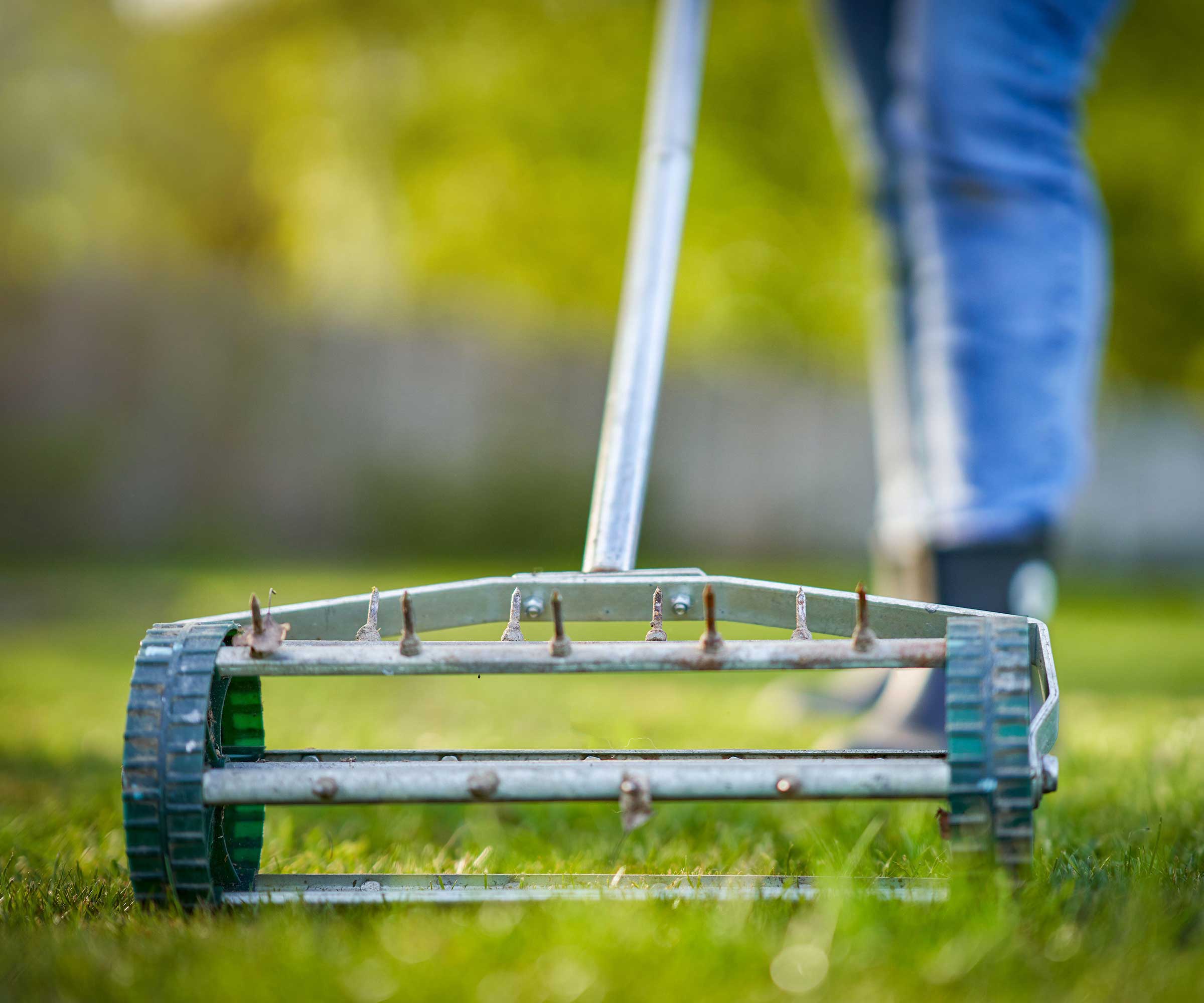
Aeration is one lawn care task that can help prevent necrotic ring spot
Necrotic ring spot does not need to strike fear into homeowners, as it can be prevented by maintaining a healthy lawn. Jeremy Yamaguchi, CEO of Lawn Love, offers some simple advice for combatting necrotic ring spots.
‘The best way to prevent lawn necrotic ring spot is to practice good lawn care,’ he says. ‘The healthier your lawn, the less vulnerable it will be to disease. Bad watering habits, poor fertilization, and compacted soil can all encourage fungal disease.’
Maintaining good lawn care practises includes improving drainage and reducing compaction through annual aeration. Compacted soils do not drain well, which leaves the grass more susceptible to the fungus.
A thick layer of thatch on the surface also reduces the amount of moisture that can get down to the roots and creates a breeding ground for the fungus. Removing this through dethatching clears out all that dead material and, along with aerating as part of a spring lawn care regime, ensures water, nutrients, and oxygen are available to the grass roots.
How and when you water a lawn could also leave your grass more vulnerable. Ryan Farley, the CEO of LawnStarter, warns how the fungus takes hold in ‘stressed grass’ or grass watered too frequently. He adds: ‘I always recommend watering your grass more deeply and more infrequently - this can be a good way to prevent this disease.’
Feeding with a balanced fertilizer is key to having a healthy lawn. Avoid excessive nitrogen fertilization that can cause lots of foliage growth at the expense of strong roots. Using a balanced and slow-release feed to fertilize a lawn in spring will help you have a green and thick lawn that is less vulnerable to necrotic ring spot.

As the CEO of Lawn Love, Jeremy Yamaguchi helps homeowners find quality, reliable lawn care. Specializing in technology and using industry experience, he intends to revolutionize the lawn care industry.

Ryan Farley is the CEO of LawnStarter, a lawn care service founded in 2013 and based in Austin, Texas.
Shop lawn care products
How to treat necrotic ring spot
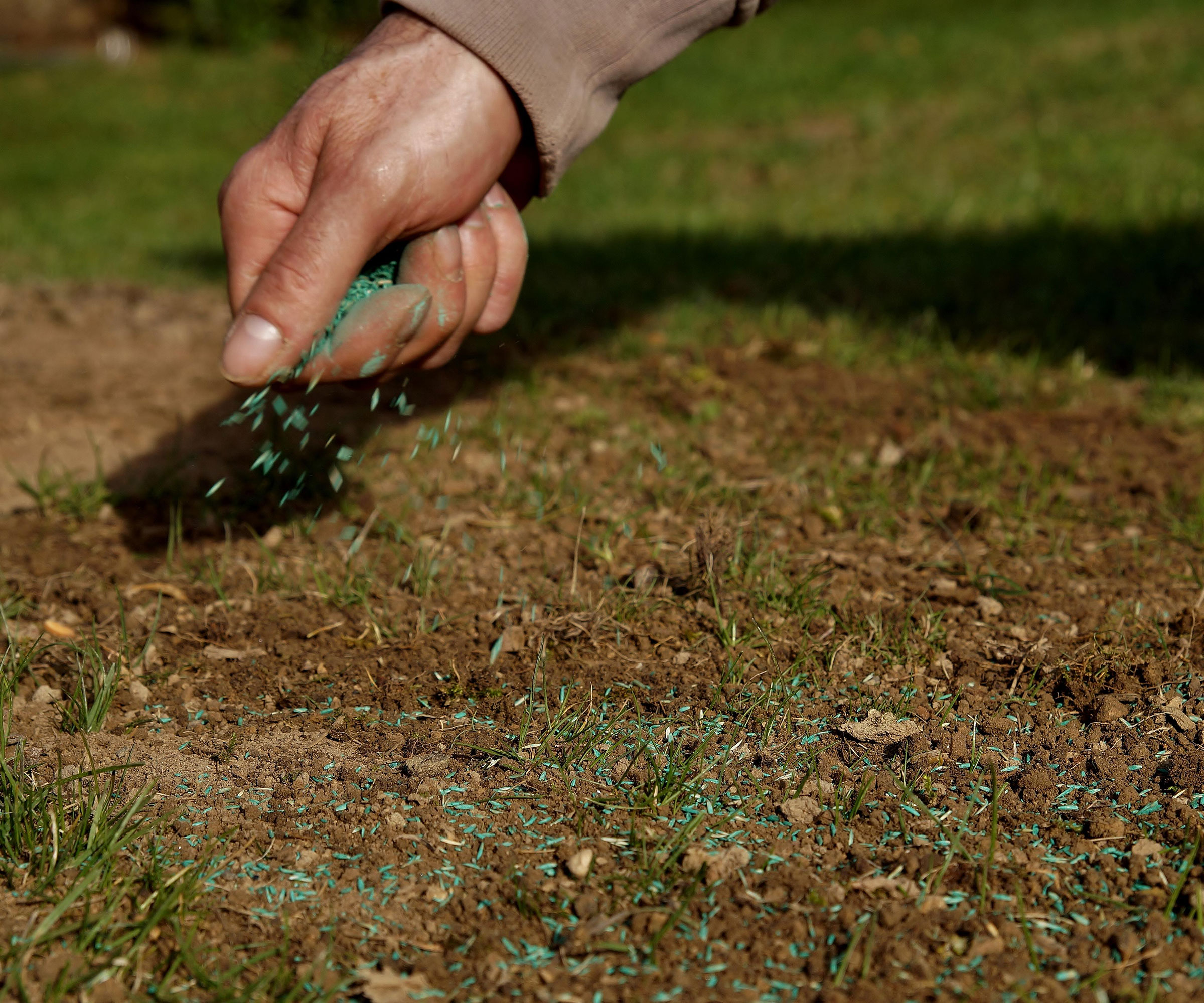
Patches affected by necrotic ring spot can be repaired and overseeded
If you identify the potential signs of necrotic ring spots, get a lawn care professional to diagnose the issue. Bare patches in a lawn can be a sign of several lawn diseases, including summer patch, dollar spot, and others. While good lawn care is the best way to avoid a whole manner of lawn diseases, it is beneficial to know exactly which one you are dealing with.
Proper care and management are the best way to fix necrotic ring spot. It may be a long-term fix, but improving the overall health of the lawn can treat the issue. Aerate and dethatch annually, always mow at a proper height, never going too low to stress the grass, and be careful with watering. It can take several years to control and eradicate necrotic ring spot, but a chemical-free approach can be successful.
Fungicides are available to use as necrotic ring spot treatments, however, the use of fungicides should also be done as a last resort. The products should be used every 14 days until the disease is not visible on the lawn.
Such fungicides can also be used in early spring as a preventative measure against necrotic ring spot and other fungal diseases. The timing must be right for preventative applications, namely when the soil temperature is between 60-70˚F for at least three days in a row.
To repair affected areas, overseed the patches with resistant turfgrass varieties. Perennial ryegrass is recommended as opposed to bluegrass, even though some varieties may have low levels of resistance to necrotic ring spot. Perennial ryegrass is a fast-growing grass seed that can fill patches.
FAQs
What grass is resistant to necrotic ring spot?
Perennial ryegrass is resistant to necrotic ring spot. The disease is majorly a problem for Kentucky bluegrass. There are no Kentucky bluegrass types that are completely immune, but there are some that show some resistance to the issue, including ‘Adelphi’, ‘Majestic’, ‘Midnight’, ‘Eclipse’ and ‘Wabash’.
Overseeding the lawn regularly and reseeding bare patches will make your grass look thicker and healthier. However, you might have grass seed left at the end of each season. To help ensure any leftover seed remains viable, see our dedicated article on how to store grass seed so it remains good to use the following year.

Drew has worked as a writer since 2008 and was also a professional gardener for many years. As a trained horticulturist, he worked in prestigious historic gardens, including Hanbury Hall and the world-famous Hidcote Manor Garden. He also spent time as a specialist kitchen gardener at Soho Farmhouse and Netherby Hall, where he grew vegetables, fruit, herbs, and cut flowers for restaurants. Drew has written for numerous print and online publications and is an allotment holder and garden blogger. He is shortlisted for the Digital Gardening Writer of the Year at the 2025 Garden Media Guild Awards.
